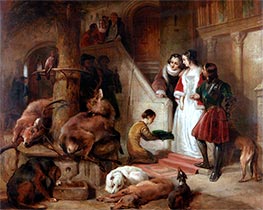
Sir Edwin Henry Landseer Painting Reproductions 4 of 4
1802-1873
English Romanticism Painter
73 Landseer Paintings

Bolton Court in Olden Times n.d.
Oil Painting
$2035
$2035
Canvas Print
$74.90
$74.90
SKU: LEH-18013
Sir Edwin Henry Landseer
Original Size: 101.6 x 127 cm
Public Collection
Sir Edwin Henry Landseer
Original Size: 101.6 x 127 cm
Public Collection